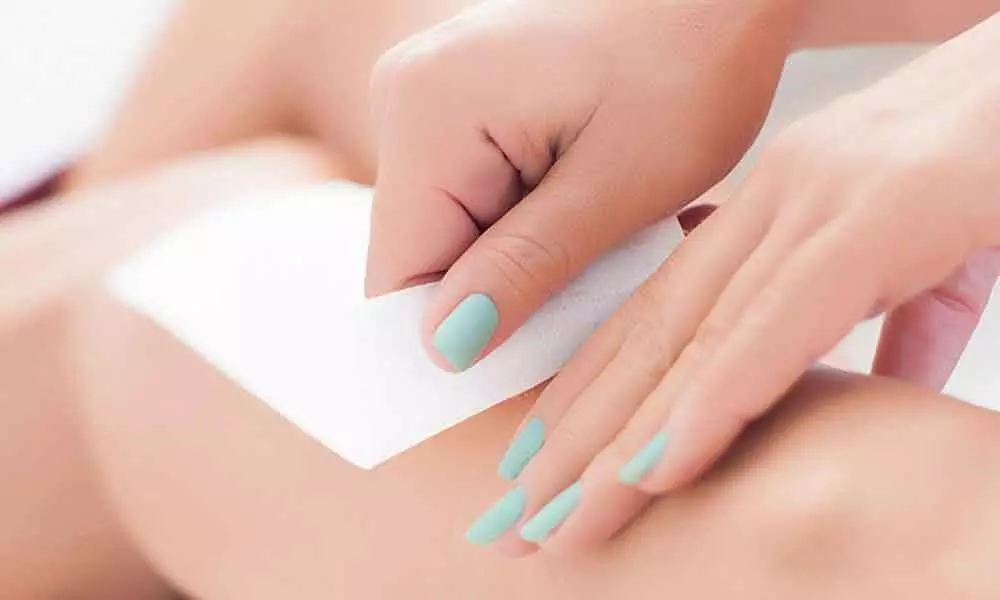How to Prevent Waxing Bumps

Waxing is a quick way to remove hair from most areas of the body. However, it is common for bumps to develop on the skin after waxing.
Waxing is a quick way to remove hair from most areas of the body. However, it is common for bumps to develop on the skin after waxing.
Many people will observe small, red bumps on the skin immediately after waxing. Others may notice them about a week later.
This article describes some of the possible causes of bumps after waxing, as well as some treatment options and prevention tips.
Causes
The following are some common causes of bumps after waxing:
Ingrown hair
An ingrown hair may appear about a week after waxing. Ingrown hairs occur when the hair grows and reinserts itself into the hair follicle.
Ingrown hairs can cause itchy and sometimes painful bumps that often look like pimples on the skin. Without treatment, ingrown hairs can become infected.
Symptoms of an infection include the hair follicle leaking pus, the area feeling warm to the touch, and in some cases, an ingrown hair cyst.
Folliculitis
Folliculitis causes itchy bumps that may have a red ring around them. They may also look similar to those of acne.
Folliculitis occurs due to damage following hair removal. Damaged hair follicles are more vulnerable to invading bacteria. When bacteria — such as staph bacteria, which are naturally present on the skin — infect the hair follicles, folliculitis can occur.
Wearing very tight clothing that rubs against the hair follicles can cause further irritation and may make the condition worse.
Contact dermatitis occurs due to an allergic reaction or irritation.
Fragranced soaps and detergents are common culprits, but the wax and any chemicals it contains may also contribute to contact dermatitis.
Usually, the bumps that occur after contact dermatitis are very itchy.
Contact dermatitis can also cause the following symptoms:
• burning
• a stinging sensation
• swelling
• peeling skin
Treatment options
In most cases, a person can treat bumps after waxing at home.
Try to keep the area clean, dry, and moisturized, as this can help reduce irritation until the skin has recovered from waxing.
Home remedies
cold compress knee
Some home remedies that can soothe bumps after waxing include:
• Cleansing the skin: Using a gentle soap and warm water to cleanse the skin can help minimize irritants. Gently pat the skin dry to avoid further irritation.
• Using cold compresses: Applying a cold compress to the area can help soothe irritation and reduce post-waxing bumps. A person can run cold water over a washcloth and apply it to the skin.
• Wearing loose clothing: Not wearing tight clothing for 1–2 days after waxing can help keep the fibers from rubbing against the skin and causing irritation.
• Using warm compresses: Warm compresses are helpful for ingrown hairs, as they can help the pores open up and potentially release the ingrown hair.
• Using cortisone cream: Applying cortisone cream to clean skin after waxing may help relieve inflammation and swelling.
• Applying fragrance free moisturizers: Applying fragrance free moisturizers, such as aloe vera gel, may help soothe irritated skin post-waxing and reduce inflammation.
Medical treatments
A person should see their doctor if the bumps start showing signs of infection. If this does occur, it will usually do so starting 2–3 days after waxing.
A doctor may prescribe an antibiotic ointment or oral antibiotics to treat the infection. These either prevent further bacteria from growing or kill off existing bacteria on the skin.
Prevention
A person can take steps to help prevent bumps after waxing different areas of the body. These include:
Face
Before waxing the face, it is best to:
Avoid using retinol products for 2–5 days before waxing. These products increase the risk of skin damage due to waxing.
Refrain from applying makeup to the skin before waxing, and do not use makeup for the remainder of the day after waxing, if possible.
Apply fragrance free moisturizers to the skin post-waxing. Avoid using products that contain "actives," such as glycolic acid or retinol, in the immediate post-waxing period.
When washing the face, avoid scrubbing or rubbing the skin with a towel. This could further irritate waxed skin.
Legs, arms, and bikini area
Exfoliating the skin using a gentle sugar scrub or body brush before waxing can help both reduce dead skin cells and enhance waxing results.
A person should also wear loose fitting clothing after waxing.
Refraining from picking at or scratching bumps after waxing can also help reduce the risk of further complications.
Bumps that occur after waxing are usually temporary and will resolve without treatment.














